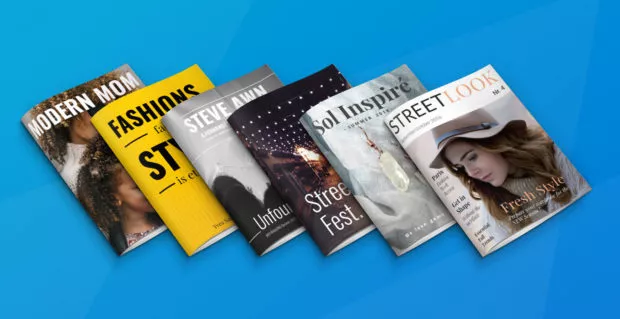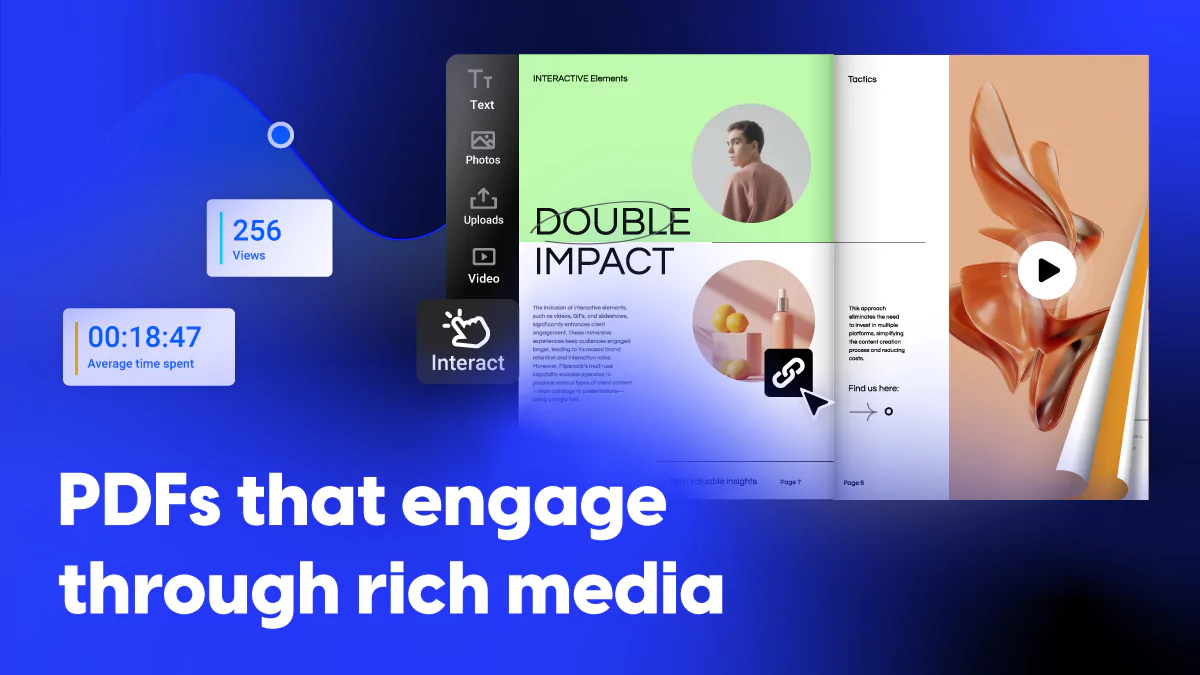A short guide on desktop and online publishing platforms
Until the age of computers, the publishing domain was reserved exclusively to print shops. Now, magazines are designed in house and only the printing job is externalized. Editors and designers work together and use publishing software for creating the layout, the covers and the graphics of a magazine, a brochure, a newspaper and so on.
Publishing software is now available everywhere, starting with the photo editor we use to design a book cover up to the design of a receipt or an invoice layout. There are many desktop publishing programs and software available, each with its own good and bad parts. However, in this article I will try to explain the need of a digital publishing platform as well and why merging the two technologies may be a good choice for everybody.
First, let’s start with some basic information:
What is desktop publishing software good for?
You can use DTP software for a large variety of tasks. Basically, almost everything that gets published or printed, is created, edited and designed with publishing software. Here are some examples that I am sure everybody knows a few things about:
- Magazines
- Catalogues
- Brochures
- Calendars
- Newspapers
- Invitations and greeting cards
- Certificates
- Posters
- Resumes
- Technical documentation and operating manuals
- Courses
- eBooks
There are so many things desktop publishing software may be used for. Thus it is almost impossible to define it as a tool with a straight up destination. However, we can narrow its usefulness to the following tasks:
Design (graphical and layout). This is the main use of the digital publishing software. Professional graphic designers use programs such as QuarkXPress, Adobe InDesign, Adobe Illustrator or Adobe Photoshop in order to create the layout of pages, their graphical design and the covers of the books and magazines. There is much confusion among professionals, but one thing is for certain: Graphical design and DTP are two distinct things. While graphical design refers only to the part of visual creation, DTP includes everything, from the visual styles to the layout of a page and the insertion of texts, images and other elements.
Education. DTP software, especially word processors, pay an important part in the education process of these days. Students are using these programs to write down and print their assignments while teachers use them to write their courses and class schedules. They are not as sophisticated as the software programs used for magazines and newspapers but still, they are digital publishing programs that are quite useful for simple tasks.
Career. People from all around the world are using DTP software and word processors to write down their resumes, cover letters or to edit their portfolios. You don’t need expensive software for these tasks but still, you need a couple of programs for creating a template, editing a text and processing or adding a few photos.
Business tasks. You can run a business without using desktop publishing software but still, if you want to be successful, these days, there’s no way around. You need DTP to create business cards, advertising materials and if you run a website, downloadable content.
Most popular desktop publishing software and who makes them
Adobe is probably the most popular name in this line of work. Their suite of apps includes Adobe Photoshop, Illustrator and InDesign, the later being the most used desktop publishing app for editors. InDesign is a powerful and professional page layout software. All these programs have the capability of saving in PDF or image format and I will tell you later why this thing is important.
Microsoft produces the most popular Office suite, which includes Word, Excel and PowerPoint, three of the most used desktop publishing apps. They are not as good as Adobe’s products when it comes to page layout software but at the same time, they can give everything you need for daily tasks and editing jobs.
Corel is best known for their page layout software, Corel Draw, a powerful desktop publishing software ideal for editors and designers of magazines, newspapers and books. While Adobe suite is more widely used than Corel, this software is still popular and has an impressive market share.
Quark produces QuarkXPress, another popular and versatile desktop publishing and layout software, ideal for newspapers and magazines.
How to use desktop publishing software correctly
There are no universal rules applicable when designing a layout of a magazine, newspaper or brochure. However, there are still some recommendations, of which I am more than happy to tell you about.
Learn about your audience: Find out everything you can about your target audience and learn how it would be better to address these people. What kinds of material do they read and how are they designed?
Do not use ALL CAPS: Maybe you think they look better on a header text. Don’t kid yourself. They don’t. It decreases readability. Use the standard headline style for a header and write in ALL CAPS only the acronyms.
Use SPACES correctly: Space only once after punctuation marks: there should be only one space left after a comma for example or, at the end of a sentence. Also, use the same amount of space at the start of each paragraph, in order to give a consistent and organized look to your text. If you want to add more readability, you can break large chunks of texts in multiple paragraphs as well.
Other important things you should consider when working with publishing software:
- Use the correct margin settings, so that the printed version will be correctly framed.
- Use headers and footers.
- Frame your images and pay attention that they are not over blocks of texts.
- Choose readable fonts and select an appropriate font size for your layout. Too large fonts will have an unaesthetic impact while too small fonts will be less visible and therefore, your page will lose readability.
- Check the contrast of the photos and other visuals on each page. You want to have a balance between dark and light tones.
- Verify the distance between elements. If the image is too closer to the text block, it may be difficult for the reader to concentrate.
Why merge desktop publishing with online publishing?
Let’s say you have a lot of PDF documents, created with desktop publishing software. You want to keep them organized and be able to access them from anywhere in the world. You can carry with you a thumb drive but at the same time, you can save them in a cloud storage.
What happens when you try to access them from a public computer that has no PDF viewer installed? Well, you can load your files with an online digital publishing platform and save them as HTML5 flipbooks which are accessible from any browser connected to the internet.
At the same time, you can publish online your magazine, newspaper or brochure and embed it in your website or give the link to the HTML5 flipbook to your readers. If you are a teacher, a digital publishing platform will ease your file exchange with your students as well.
Therefore, although you don’t want to get rid of your desktop apps just yet, you might want to merge them with online apps in order to make your files more accessible and at the same time, give them a stylish and professional look.
For example, let’s say you have an eCommerce website that sells cookware and dinnerware with a blog focused on recipes. The blog is not your main thing but still, you are engaged in a content marketing campaign and want to give your customers something of value to read as well. What can you do? Well, things are quite simple when you want to publish online a magazine or a brochure. Grab your most valued articles, make a PDF magazine and upload it on a digital online publishing platform. Embed the HTML5 version on your main page and make sure that your customers are able to read it and share it as well.
How to publish online quick and easy
First, make a checklist of all the things you need in order to publish online such as the main topic, the target audience, the texts and the photos, the visual design and so on. Then, choose your publishing platform. There are several choices available. However, I recommend Flipsnack for its easy to learn interface and rich templates database. Log in into the app, load your PDF files, edit your flipbook then publish it immediately.
Conclusion
There are several desktop publishing software programs to choose from but this is a choice that depends mostly on what are your expectations, your tasks and your skills. However, regardless of your choice, you should also consider publishing in HTML5 format. You will have an online readable version of your PDF document that is available from any computer connected to the internet.
You will need both types of publishing platforms but at the same time, it’s important to merge them and use them as complementary software programs. Thus, you can expand your reach and also, keep your files more organized and more accessible.
How often do you work with desktop publishing software? Did you try to publish online? What are your thoughts about digital publishing software? How is Flipsnack working for you?




If this is something that you are into or are learning like me, I recommend reading Presenting Data Effectively by Stephanie Evergreen, stephanieevergreen.com for her site and info on her book. But with her screenshots and basically step by step checklists, you can open up the creativity door and really use the full potential of your programs. It’s a great resource for sure.
Thanks for sharing an information!!!